I'm designing a device powered from USB. The device uses FTDI FT2232 chip for USB connection. Upon a command from a computer FT2232 chip should enable power via a MOSFET switch to rest of the circuit. This additional circuit has a capacitance of 50uF (FPGA + aux stuff) and is powered from the same USB port. After the switch is turned on, this additional 50uF capacitance will sink a huge current until it's charged.
How to limit this inrush current 1) to avoid voltage drop on power rails and 2) to avoid USB PTC from disconnecting power to the device?
Is it enough to put a ferrite bead in series with MOSFET switch to limit the inrush current? Or should I use a special chips, like chips for limiting current or chips for slew rate control?
Note: all devices are powered from 3.3V. So a small drop on 5V rail should not be a problem if it does not prevent an LDO to output stable 3.3V.
